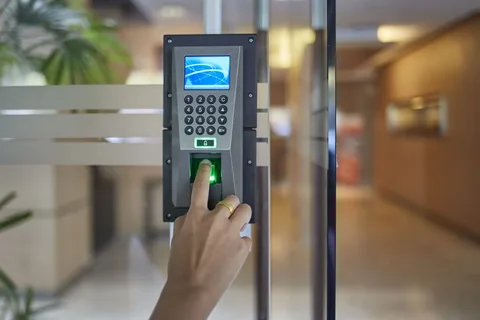Building a Scalable Payment Infrastructure: How Payment Gateways, Card Networks and the Payment Ecosystem Work
vinay November 18, 2025 0 COMMENTS
In today’s digital, global and always-connected world, businesses need to make sure that every transaction is safe, quick and reliable. In this case, payment infrastructure is the most important part of the business. It links together businesses, banks, payment gateways, card networks and customers in a way that makes it easy for money to move safely across borders and devices.
This article talks about what payment infrastructure really is, what its main parts are and how different parts of the payment ecosystem, like payment gateways, payment processors and card networks, work together. It also talks about the different types of payments, how to pick the best payment gateway and how to create and grow a solution that works for today’s businesses.
Table of Contents
What is Payment Infrastructure and Why It Matters
At its core, payment infrastructure is the collection of systems, networks and payment processing services that allow businesses to accept contactless payments online and offline. It connects consumers’ banks to merchants’ accounts, ensuring each payment transaction is authorised, processed and settled securely.
This infrastructure supports online payments, cross-border transactions and real-time networks, enabling efficient digital-payment solutions. Reliable infrastructure reduces failed transactions, improves the payment experience and protects payment details through encryption and compliance with the payment card industry data security standards.
From a business perspective, strong payment systems mean fewer interruptions, lower payment processing costs and the ability to scale internationally. A secure, adaptable and well-architected infrastructure is not only a technical foundation but a driver of growth, helping companies offer new payment options and reach more customers.
Components of Modern Payment Infrastructure
Modern payment infrastructure is made up of many parts that work together to make each payment process happen. These are payment gateways, payment processing solutions, card networks, banks and compliance systems that keep payment info safe and protect sensitive payment data.
Payment Gateway and Payment Processors
A payment gateway is a digital link between a merchant and a payment processor. It takes the customer’s payment info, encrypts it and sends it to the processor to get permission. Payment gateways are basically middlemen that link the checkout page on the front end to the payment network on the back end.
There are many kinds of payment gateways, including hosted, API-based and self-hosted ones. Hosted gateways send users to other websites, while API-based gateways connect directly to websites for a seamless payment experience. Businesses need to choose the right payment gateway based on how many transactions they do, how much technical skill they have and where they are located.
The payment processor gets the data from the payment gateway, checks it with the issuing bank and then gives the go-ahead for the transaction. The payment processor then sends the result back to the gateway, which tells the merchant’s system whether the transaction was approved or declined. That flow of communication shows how payment gateways work in real time.
Card Network, Issuers and Acquirers
The card network connects banks, issuers and acquirers, ensuring each transaction travels safely through the payment rails. Within the payment industry ecosystem, card networks validate, route and settle payments between financial institutions.
They form the backbone of the global payment industry, allowing merchants to accept card payments anywhere in the world. Card networks also maintain compliance with the card industry data security standard, ensuring all parties secure payment and financial information.
Legacy Infrastructure, Real-Time & Cross-Border Systems
Many businesses still use old infrastructure, which can slow down transactions and make them less flexible. But the industry is quickly moving toward real-time payment networks that make settlements faster and more accurate, like A-Pay.
At the same time, advanced payment processors, regional hubs and global payments integration are making cross-border payments faster and easier. These systems make it easier for businesses to handle complicated international transactions by improving the process of collecting, clearing and settling payments across borders.
Types of Payment: Options Today and What to Support
The system of today can handle many different kinds of payments. These are credit and debit cards, bank transfers, digital wallet payments, ACH transfers and payments that don’t need to be touched. The speed, security and regulation of each payment method require different types of infrastructure.
Businesses can meet the needs of a wide range of customers and accept payments from all over the world by supporting different payment methods. For instance, more and more people are using digital wallets and in many markets, electronic systems like PayPal and Apple Pay are now the norm.
Payment gateways that combine different payment methods give you more options and make your system more stable. These kinds of payment solutions let businesses keep track of payment info, keep purchase processes safe and give all customers a reliable payment experience.
Choosing the Right Payment Gateway and Infrastructure for Your Business
To choose the best payment gateway for your business, you need to know who your customers are, how far your business can reach and what it needs to run. Coverage, payment network support, scalability and integration should be the top priorities for businesses. For future growth, it’s best to work with payment processing companies that have strong APIs and modular architecture. Companies should think about the following when using payment gateways:
- Scalability: Can the infrastructure handle a lot of transactions at once?
- Security: Does it keep sensitive purchase information safe and follow PCI DSS rules?
- Integration: How well does it work with electronic payment and accounting software that are already in use?
- Cost: What are the costs of processing and doing business in the long run?
As they grow, businesses also need to plan for high volume and redundancy so they don’t have to stop working. Avoiding legacy infrastructure bottlenecks and picking payment service providers with a good track record of uptime helps keep things running smoothly.
In the end, a company’s ability to accept payments easily and provide a consistent payment experience depends on choosing the right payment gateway and reliable payment service providers.
Scaling Payment Infrastructure: Best Practices and Future Trends
Scaling payment infrastructure isn’t just about handling more transactions; it’s about automation, monitoring and resilience. To make sure things keep going, companies should put purchase processing services with real-time analytics and strong data management at the top of their list. Some of the most important best practices are:
- Automating reconciliation and reporting so that payments can be processed more quickly.
- Using servers with high availability and global failover to make sure payments go through.
- Making a payment data architecture that can grow to meet compliance and performance needs.
Monitoring systems and payment gateways help find delays and make sure that the payment processor talks to all endpoints in a timely manner. These steps keep sensitive purchase information safe and make things run more smoothly overall.
New payment options, alternative payment methods and embedded finance models are just a few of the new things that will come to payment infrastructure in the future. Real-time processing, open APIs and the ability to work across borders will keep changing the payment industry. Companies that use flexible payment frameworks and scalable architectures will stay ahead of their competitors and get the most out of international payment opportunities.
Conclusion
A strong, scalable payment system is now a strategic asset instead of just a tool for the back office. Every part, from payment gateways and card networks to payment processors and global payments, is important for a transaction to go through.
Businesses can accept payments online, safeguard sensitive data and establish a foundation that supports future growth by reviewing their current setup, improving their purchase systems and picking modern payment gateway solutions.
RELATED ARTICLES
Latest Articles
 Jagermeister 750ml Price in India: Full …In Whisky Prices
Jagermeister 750ml Price in India: Full …In Whisky Prices Tech-Savvy Ways to Streamline Your Finan…In Business
Tech-Savvy Ways to Streamline Your Finan…In Business Magic Moments Vodka Price in India: Size…In General
Magic Moments Vodka Price in India: Size…In General The Role of Claims Agencies in Holding A…In Tips
The Role of Claims Agencies in Holding A…In Tips How Embracing Cloud‑Native Strategies Tr…In Technology
How Embracing Cloud‑Native Strategies Tr…In Technology Poorvika Mobiles Pun: Best Place for You…In Technology
Poorvika Mobiles Pun: Best Place for You…In Technology Why Choosing the Right NEET Coaching Mak…In Education
Why Choosing the Right NEET Coaching Mak…In Education Unwrap Wonder: Hamper Gifts That Celebra…In Tips
Unwrap Wonder: Hamper Gifts That Celebra…In Tips
stopie.com is a participant in the Amazon Services LLC Associates Program, an affiliate advertising program designed to provide a means for sites to earn advertising fees by advertising and linking to Amazon.com.
Clicking on an Amazon link from stopie.com does not increase the cost of any item you purchase.
We will only ever link to Amazon products that we think our visitors may be interested in and appreciate learning more about.



